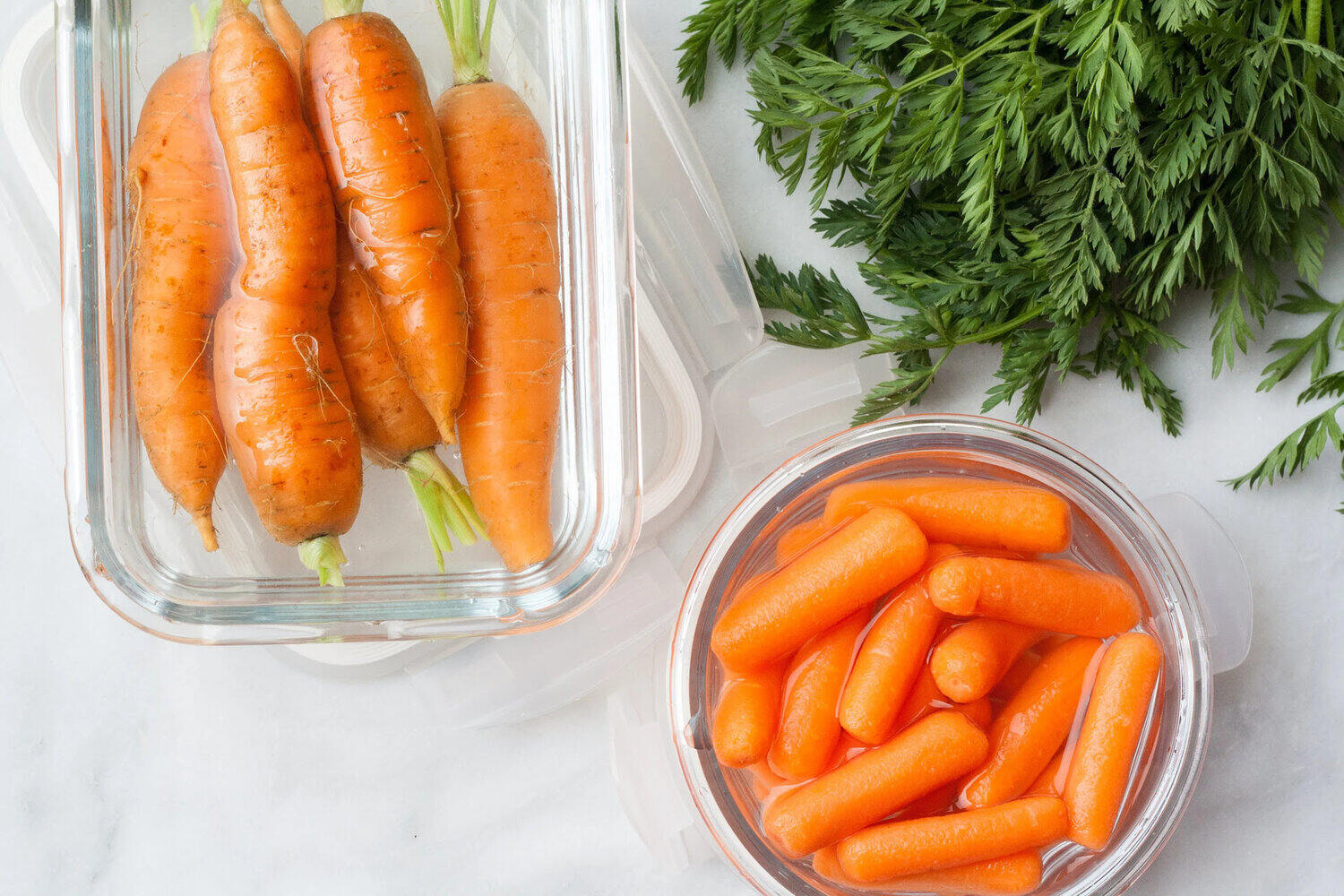

Articles
How To Store Carrots Without Refrigeration
Modified: August 31, 2024
Learn the best methods to store carrots without using a refrigerator in this helpful article. Keep your carrots fresh and tasty for longer periods without the need for refrigeration.
(Many of the links in this article redirect to a specific reviewed product. Your purchase of these products through affiliate links helps to generate commission for Storables.com, at no extra cost. Learn more)
Introduction
Welcome to the ultimate guide on how to store carrots without refrigeration. Carrots are a versatile and nutritious vegetable that can be enjoyed in a variety of dishes, whether it’s a refreshing salad or a hearty stew. However, one common challenge is how to properly store carrots to ensure they stay fresh and crisp for as long as possible.
Refrigeration is often the go-to method for preserving the freshness of carrots, but not everyone has access to a refrigerator or wants to use it for storing vegetables. The good news is that there are several alternative methods that can help you keep your carrots fresh without the need for refrigeration. In this article, we will explore these methods in detail and provide you with step-by-step instructions on how to implement them.
Before we dive into the different storage methods, it’s important to understand why proper storage is crucial for carrots. Carrots are living organisms that continue to respire after being harvested. This process involves the conversion of oxygen into carbon dioxide, which can eventually lead to the degradation of the carrots if not properly managed. By implementing the right storage techniques, you can slow down this respiration process and extend the shelf life of your carrots.
Key Takeaways:
- Store carrots without refrigeration using methods like root cellar storage, sand or soil storage, clamping, carrot bundles, and more. Enjoy fresh, flavorful carrots for an extended period with these innovative techniques.
- Preserve carrots through canning, pickling, or fermentation for unique flavors and extended shelf life. Explore various methods to savor the natural goodness of carrots year-round.
Read more: How To Store Meat Without Refrigeration
Storing Carrots Without Refrigeration
When it comes to storing carrots without refrigeration, there are several methods you can choose from. Each method offers its own unique benefits and can be adapted to suit your specific needs. Let’s explore these methods in detail:
Method 1: Root Cellar Storage
Root cellars have been used for centuries as a natural way to store vegetables, including carrots, without the need for refrigeration. A root cellar provides a cool, dark, and humid environment that helps slow down the respiration process of carrots and maintains their freshness for an extended period. If you have access to a basement or a cool storage area, you can create a makeshift root cellar by following these steps:
- Choose a spot in your storage area that remains consistently cool, ideally between 32-40°F (0-5°C).
- Clean the area and remove any dirt or debris.
- Place a layer of straw or hay on the floor to act as insulation.
- Arrange your carrots in wooden crates or baskets, ensuring they are not touching each other.
- Cover the crates or baskets with a breathable cloth to protect the carrots from light and dust.
- Regularly check the carrots for any signs of spoilage and remove any damaged ones to prevent the spread of decay.
Method 2: Sand or Soil Storage
Another effective method for storing carrots without refrigeration is by using sand or soil. This method helps maintain the moisture balance of the carrots and prevents them from drying out. Follow these steps to store your carrots using sand or soil:
- Prepare a wooden box or airtight container that is large enough to hold your carrots.
- Fill the container with a layer of sand or soil, ensuring it is clean and free from contaminants.
- Place your carrots vertically into the sand or soil, being careful not to let them touch each other.
- Add another layer of sand or soil to cover the carrots completely.
- Store the container in a cool, dry place away from direct sunlight.
- Check the carrots regularly and remove any that show signs of spoilage.
Method 3: Clamping
Clamping is an ancient storage method that involves burying carrots in the ground to create a natural cold storage area. It is especially useful in regions with cold climates. Here’s how you can clamp your carrots:
- Select a suitable location in your garden or backyard where the ground remains cool and doesn’t freeze completely.
- Create a mound of soil and dig a shallow trench in the center.
- Place your carrots in the trench, aligning them side by side without allowing them to touch.
- Cover the carrots with straw or hay to insulate them from the cold and prevent freezing.
- Add layers of soil on top of the carrots, ensuring the mound is tall enough to withstand frost.
- Mark the location of the clamp for easy retrieval when needed.
Read more: How To Store Eggs Without Refrigeration
Method 4: Carrot Bundles
If you have a small quantity of carrots that you want to store without refrigeration, creating carrot bundles can be an effective option. Here’s how to do it:
- Gently wash and dry your carrots, ensuring they are free from dirt.
- Group the carrots together in small bunches, preferably with similar sizes.
- Tie each bundle of carrots with a rubber band or twine, leaving some space between the carrots.
- Hang the carrot bundles in a cool, dry place away from direct sunlight.
- Regularly inspect the bundles for any signs of deterioration and discard any spoiled carrots.
Stay tuned for the rest of the methods in the upcoming response!
Method 1: Root Cellar Storage
A root cellar is a traditional method of storing vegetables, including carrots, in a cool, dark, and humid environment. This method mimics the conditions found underground, providing an ideal environment for preserving the freshness and flavor of your carrots without the need for refrigeration.
If you have a basement or a cool storage area, you can easily create a makeshift root cellar to store your carrots. Here’s how:
- Choose a spot in your storage area that remains consistently cool, ideally between 32-40°F (0-5°C). This can be a corner of your basement or a well-ventilated room.
- Clean the area thoroughly, removing any dirt or debris that could potentially contaminate your carrots.
- Place a layer of straw or hay on the floor to act as insulation and provide a cushioning effect for your carrots.
- Next, arrange your carrots in wooden crates or baskets. Ensure that there is enough space between each carrot, so they don’t touch or overlap.
- Cover the crates or baskets with a breathable cloth to protect the carrots from light exposure and dust. This will help maintain optimal conditions for storage.
- It’s important to regularly check the carrots for any signs of spoilage. Remove any damaged or decaying carrots immediately to prevent the spread of decay to the other carrots.
Root cellars have the advantage of providing a consistent environment with the right temperature, humidity, and darkness to slow down the respiration process of carrots and extend their shelf life. By creating a root cellar-like storage area, you can enjoy fresh and crisp carrots for an extended period.
It’s worth noting that root cellar storage requires proper ventilation to prevent the buildup of moisture, which can lead to spoilage. It’s advisable to monitor the humidity levels and adjust them if necessary by providing adequate airflow.
Remember to inspect your carrots regularly and discard any that show signs of mold, decay, or softening. Properly stored carrots in a root cellar can last several months, providing you with a steady supply of fresh produce even when the growing season has passed.
Root cellar storage is not only limited to carrots; it can also be used for storing other root vegetables like potatoes, beets, and onions. By utilizing this method, you can make the most of your harvested vegetables and enjoy their flavors all year round.
In the next section, we will explore another method for storing carrots without refrigeration: sand or soil storage. Stay tuned!
Method 2: Sand or Soil Storage
Another effective method for storing carrots without refrigeration is by using sand or soil. This method helps maintain the moisture balance of the carrots and prevents them from drying out, ensuring their long-lasting freshness.
To store your carrots using sand or soil, follow these steps:
- Prepare a wooden box or an airtight container that is large enough to hold your carrots. Make sure the container is clean and free from any contaminants.
- Fill the container with a layer of clean sand or soil. The sand or soil acts as a natural insulator and regulator of moisture.
- Place your carrots vertically into the sand or soil, being careful not to let them touch or overlap each other. This helps prevent the spread of any potential spoilage.
- Add another layer of sand or soil to cover the carrots completely. The depth of the layer will depend on the quantity of carrots you are storing.
- Store the container in a cool, dry place away from direct sunlight. The storage location should ideally have a temperature between 32-40°F (0-5°C).
- Regularly check the carrots for any signs of decay or mold. Remove any spoiled carrots immediately to prevent them from affecting the others.
By storing carrots in sand or soil, you create a microclimate that helps maintain the moisture content and provides a cool environment for the carrots to stay fresh. The sand or soil helps regulate the moisture levels around the carrots, preventing them from drying out or becoming too moist, which can lead to spoilage.
It’s important to note that the container used for sand or soil storage should have good ventilation to prevent the buildup of excess moisture. This can be achieved by drilling small holes in the container or using breathable materials.
When you need to retrieve carrots from the sand or soil storage, gently brush off any excess sand or soil and rinse the carrots under cold water before using them. This will ensure that any remaining sand or soil is removed.
Using the sand or soil storage method, you can extend the shelf life of your carrots for several months, allowing you to enjoy their crunchy texture and sweet flavor even outside of the harvest season.
In the next section, we will explore another method for storing carrots without refrigeration: clamping. Stay tuned!
Method 3: Clamping
Clamping is an age-old method used to store root vegetables like carrots without refrigeration. This traditional technique involves burying the vegetables in the ground to create a natural cold storage area. Clamping is especially useful in regions with cold climates where the ground remains cool throughout the winter.
Here’s how you can clamp your carrots:
- Select a suitable location in your garden or backyard where the ground remains cool and doesn’t freeze completely. Ideally, this should be a well-drained area away from excessive moisture.
- Create a mound of soil by piling it up in a circular or elongated shape. The size of the mound will depend on the quantity of carrots you want to store.
- Using a spade or shovel, dig a shallow trench in the center of the mound. The depth of the trench should be about the same length as the anticipated storage time. For example, if you plan to store the carrots for three months, make the trench about three feet long.
- Gather your carrots and remove any leafy tops, gently brushing off any excess dirt. It’s essential to use only healthy, undamaged carrots for clamping.
- Place your carrots in the trench, aligning them side by side without allowing them to touch. Be careful not to overcrowd the carrots, as this can lead to spoilage.
- Cover the carrots with straw or a layer of dry leaves to insulate them from the cold and prevent freezing. Make sure to completely cover the carrots, leaving no gaps or exposed areas.
- Add layers of soil on top of the carrots, gradually filling the trench until it is level with the surrounding ground. The soil acts as insulation, protecting the carrots from extreme temperature fluctuations.
- Mark the location of the clamp for easy retrieval when needed. You can use a stake or a marker to indicate the area.
Clamping provides a natural, low-maintenance storage solution for carrots. The mound of soil acts as a protective barrier, shielding the carrots from freezing temperatures while still providing a cool and humid environment for storage. The natural insulation offered by the soil and straw helps regulate the temperature and humidity, preserving the flavor and texture of the carrots for an extended period.
During the storage period, it’s essential to occasionally inspect the clamped carrots for any signs of spoilage. Remove any rotting or decaying carrots promptly to prevent further contamination of the remaining ones.
Clamping is not limited to carrots alone; you can also use this method to store other root vegetables like potatoes, turnips, and beets. By using clamping, you can enjoy the fresh taste of your homegrown produce throughout the winter months.
In the next section, we will explore another method for storing carrots without refrigeration: carrot bundles. Stay tuned!
Read more: How To Store Lemons Without Refrigeration
Method 4: Carrot Bundles
If you have a small quantity of carrots that you want to store without refrigeration, creating carrot bundles can be a convenient and effective option. This method allows you to easily access your carrots while keeping them fresh for an extended period.
Here’s how you can create carrot bundles for storage:
- Gently wash your carrots and remove any excess dirt. It’s important to handle the carrots with care to avoid damaging them.
- Group the carrots together in small bunches. You can select a suitable number of carrots for each bundle based on their size and the amount you’ll need for future use.
- Take a rubber band or twine and secure each bundle of carrots, leaving some space between each carrot. This allows for proper air circulation and prevents the carrots from rubbing against each other.
- Hang the carrot bundles in a cool, dry place away from direct sunlight. You can use hooks or a pegboard to hang the bundles, ensuring they are elevated from the ground.
- Make sure the storage area has good ventilation to prevent the buildup of moisture, which can lead to spoilage. Proper airflow helps maintain the freshness of the carrots.
- Check the carrot bundles regularly for any signs of deterioration. Remove any carrots that show mold, rot, or softening, as this can impact the other carrots in the bundle.
Creating carrot bundles not only provides an organized storage solution but also allows you to easily access the desired quantity of carrots whenever needed. Hanging the bundles in a well-ventilated area helps maintain their freshness by preventing moisture buildup and providing optimal airflow.
It’s important to note that while carrot bundles are a convenient storage method, this technique is best suited for smaller quantities of carrots. If you have a large harvest, consider utilizing other storage methods such as root cellars, sand or soil storage, or clamping to accommodate a larger supply.
By properly bundling and hanging your carrots, you can enjoy fresh and crispy carrots for an extended period, preserving the natural flavor and nutritional benefits they offer.
In the next section, we will explore another method for storing carrots without refrigeration: vegetable storage bags. Stay tuned!
Method 5: Vegetable Storage Bags
Using vegetable storage bags is a convenient and efficient method for storing carrots without the need for refrigeration. These specialized bags provide an ideal environment for your carrots, helping to maintain their freshness and crispness for an extended period.
Here’s how you can use vegetable storage bags to store your carrots:
- Ensure your carrots are clean and dry. Remove any excess dirt or moisture from the surface of the carrots.
- Select a high-quality vegetable storage bag that is designed specifically for storing produce. These bags are usually made of breathable material to allow proper airflow while preventing excessive moisture buildup.
- Place the carrots into the storage bag, ensuring they are not overcrowded. It’s important to leave enough space for the carrots to breathe and for air to circulate around them.
- Seal the bag tightly to prevent any air or moisture from entering. Some vegetable storage bags come with built-in zip seals or drawstrings to ensure a secure closure.
- Store the bag of carrots in a cool location, away from direct sunlight and sources of heat. Ideally, the storage temperature should be between 32-40°F (0-5°C).
- Regularly check the carrots for any signs of spoilage. Remove any carrots that show mold, rot, or softening to prevent the spread of decay to the rest of the carrots.
Vegetable storage bags provide a controlled environment for your carrots, allowing them to breathe while protecting them from excessive moisture or drying out. The breathable material of the bag helps regulate the humidity and prevents the buildup of condensation, which can lead to spoilage.
These bags are available in various sizes, allowing you to store small or large quantities of carrots as needed. They are also reusable, making them an eco-friendly option for long-term storage.
Using vegetable storage bags is not limited to carrots; they can also be used to store other vegetables like cucumbers, celery, and peppers. This method helps prolong the shelf life of your produce, allowing you to enjoy fresh and crisp vegetables for a longer period.
In the next section, we will explore another method for storing carrots without refrigeration: canning or pickling. Stay tuned!
Store carrots without refrigeration by placing them in a cool, dark, and well-ventilated place. Wrap them in a damp towel to keep them from drying out. Check regularly for any signs of spoilage.
Method 6: Canning or Pickling
Canning or pickling carrots is a popular method for preserving them without refrigeration. This technique involves preserving the carrots in a solution of vinegar, water, and seasonings, which not only extends their shelf life but also infuses them with delicious flavors.
Here’s how you can can or pickle carrots:
- Start by selecting fresh and firm carrots. Thoroughly wash and peel them, removing any blemishes or tough spots.
- Prepare a pickling solution by combining vinegar, water, salt, sugar, and your choice of herbs and spices. Bring the solution to a boil, then reduce the heat and let it simmer for a few minutes to allow the flavors to meld together.
- Cut the carrots into desired shapes, such as slices, sticks, or whole baby carrots.
- Place the carrot pieces into sterilized canning jars, leaving a bit of headspace at the top for the pickling liquid.
- Pour the hot pickling solution into the jars, ensuring that the carrots are completely covered.
- Seal the jars with lids and process them according to proper canning guidelines. This typically involves placing the jars in a boiling water bath for a specific duration to ensure safe preservation.
- After the jars have cooled, store them in a cool, dark place away from direct sunlight. The canned or pickled carrots will typically have a shelf life of several months.
Canning or pickling carrots not only helps preserve their freshness but also adds a tangy and flavorful twist to the natural sweetness of the carrots. The pickled carrots can be enjoyed as a standalone snack, added to salads, sandwiches, or even used as a condiment for various dishes.
It’s important to follow proper canning procedures to ensure the safety and preservation of your carrots. This includes using sterilized jars, following recommended processing times, and storing the jars in a suitable environment. Improper canning practices can lead to food spoilage and pose health risks.
By canning or pickling your carrots, you can enjoy their delicious flavors even when they are out of season. It’s a great way to make the most of your carrot harvest and have a stock of preserved carrots on hand for future use.
In the next section, we will explore another method for storing carrots without refrigeration: fermentation. Stay tuned!
Method 7: Fermentation
Fermentation is a traditional method of preserving carrots without refrigeration that not only extends their shelf life but also introduces probiotics and unique flavors. This process involves the conversion of sugars in the carrots into lactic acid, creating an acidic environment that inhibits the growth of harmful bacteria.
Here’s how you can ferment carrots:
- Wash and peel the carrots, removing any blemishes or tough spots.
- Cut the carrots into desired shapes, such as slices, sticks, or small coins.
- Prepare a brine solution by dissolving salt in water. The ratio of salt to water is typically 1-2 tablespoons of salt per quart of water, depending on your taste preferences.
- Submerge the carrots in the brine solution in a clean, non-reactive container. You can add additional flavorings such as garlic, herbs, or spices to enhance the taste.
- Weigh down the carrots with a fermentation weight or a clean, food-grade object to keep them fully submerged in the brine and prevent exposure to air.
- Cover the container with a breathable cloth or use an airlock fermentation lid to allow gases to escape during the fermentation process.
- Store the container in a cool, dark place with a temperature range of around 55-75°F (12-24°C).
- Check the jar daily to ensure the carrots remain submerged and that no mold or scum has formed on the surface. Skim off any impurities that may appear.
- The fermentation process typically takes 1 to 4 weeks, depending on your desired level of sourness. Taste the carrots occasionally to monitor their flavor development.
- Once the carrots have reached the desired level of acidity, transfer them to a clean jar and refrigerate to slow down the fermentation process.
Fermented carrots make a flavorful and healthy addition to salads, sandwiches, or as a condiment on their own. The fermentation process enhances the nutrient content of the carrots and introduces beneficial bacteria to support gut health.
It’s important to pay attention to proper fermentation techniques to ensure the safety and quality of the fermented carrots. Ensure that the carrots are fully submerged in the brine, use clean and non-reactive containers, and monitor the fermentation process regularly to prevent spoilage.
Fermentation provides a unique and exciting way to preserve and enjoy the flavors of carrots without the need for refrigeration. Experiment with different seasonings and variations to create your own signature fermented carrot recipe.
With these seven methods for storing carrots without refrigeration, you have a range of options to choose from based on your preferences and available resources. Whether you opt for root cellar storage, sand or soil storage, clamping, carrot bundles, vegetable storage bags, canning or pickling, or fermentation, you can enjoy the natural sweetness and nutritional benefits of fresh carrots for an extended period.
So go ahead and try out these methods to store your carrots and ensure you always have a supply of fresh, crunchy carrots even outside of the harvest season. Happy storing!
Read more: How To Store Apples Without Refrigeration
Conclusion
Storing carrots without refrigeration is not only possible but also a practical solution to ensure their long-lasting freshness and flavor. In this comprehensive guide, we have explored seven different methods for storing carrots without the need for refrigeration, each offering its own benefits and options for preserving this versatile vegetable.
From root cellar storage to sand or soil storage, clamping, carrot bundles, vegetable storage bags, canning or pickling, and fermentation, there are various techniques to suit different preferences, quantities, and storage durations. These methods not only help extend the shelf life of carrots but also allow you to enjoy their nutritional benefits and unique flavors long after the harvest season has passed.
It’s important to consider the specific storage requirements of carrots to maintain their freshness. Factors such as proper temperature, humidity, and protection from light and moisture play key roles in preserving the quality of the carrots. By implementing the right storage techniques, you can slow down the respiration process of carrots and maximize their shelf life.
Whether you have access to a root cellar or would prefer a simpler method like storing carrots in sand or soil, clamping them in the ground, bundling them together, using vegetable storage bags, canning or pickling them, or fermenting them, the choice is yours. Each method offers its own advantages and can be tailored to your specific needs and available resources.
By following the step-by-step instructions provided in this guide, you can confidently store your carrots without refrigeration and savor their delicious taste and nutritional benefits for an extended period. Remember to regularly check for spoilage, remove any damaged carrots, and ensure proper storage conditions to maintain the quality of your produce.
So, whether you’re a passionate gardener looking to store your homegrown carrots or someone who wants to prolong the shelf life of store-bought carrots, these methods will help you achieve that goal. Embrace the versatility of carrots and enjoy their freshness in various dishes throughout the year.
With these innovative and practical storage methods, you can ensure that you always have a supply of fresh and vibrant carrots on hand for your culinary creations. Happy storing and savoring the natural goodness of carrots, the versatile vegetable that brings both nutrition and flavor to your plate!
Frequently Asked Questions about How To Store Carrots Without Refrigeration
Was this page helpful?
At Storables.com, we guarantee accurate and reliable information. Our content, validated by Expert Board Contributors, is crafted following stringent Editorial Policies. We're committed to providing you with well-researched, expert-backed insights for all your informational needs.
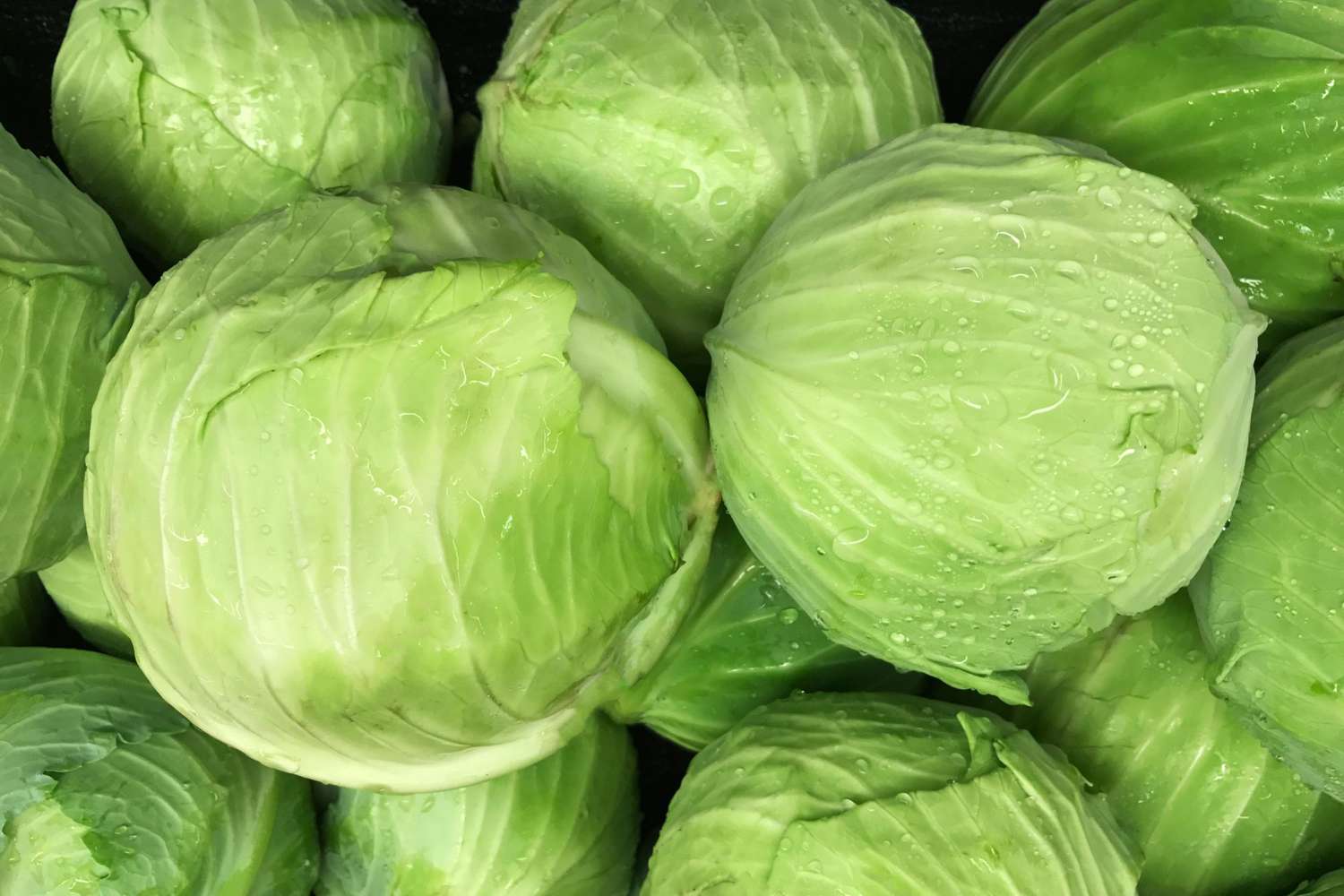
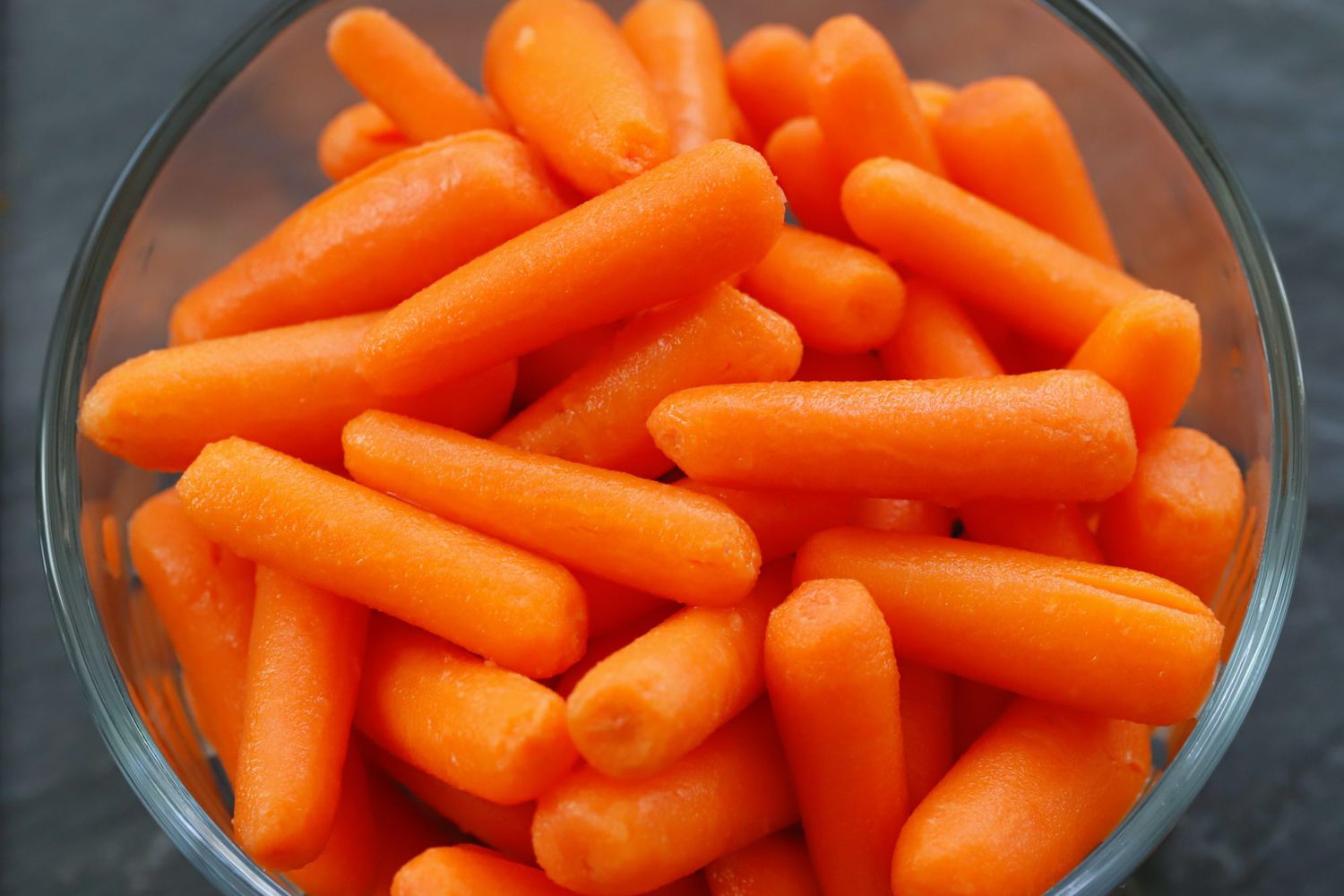
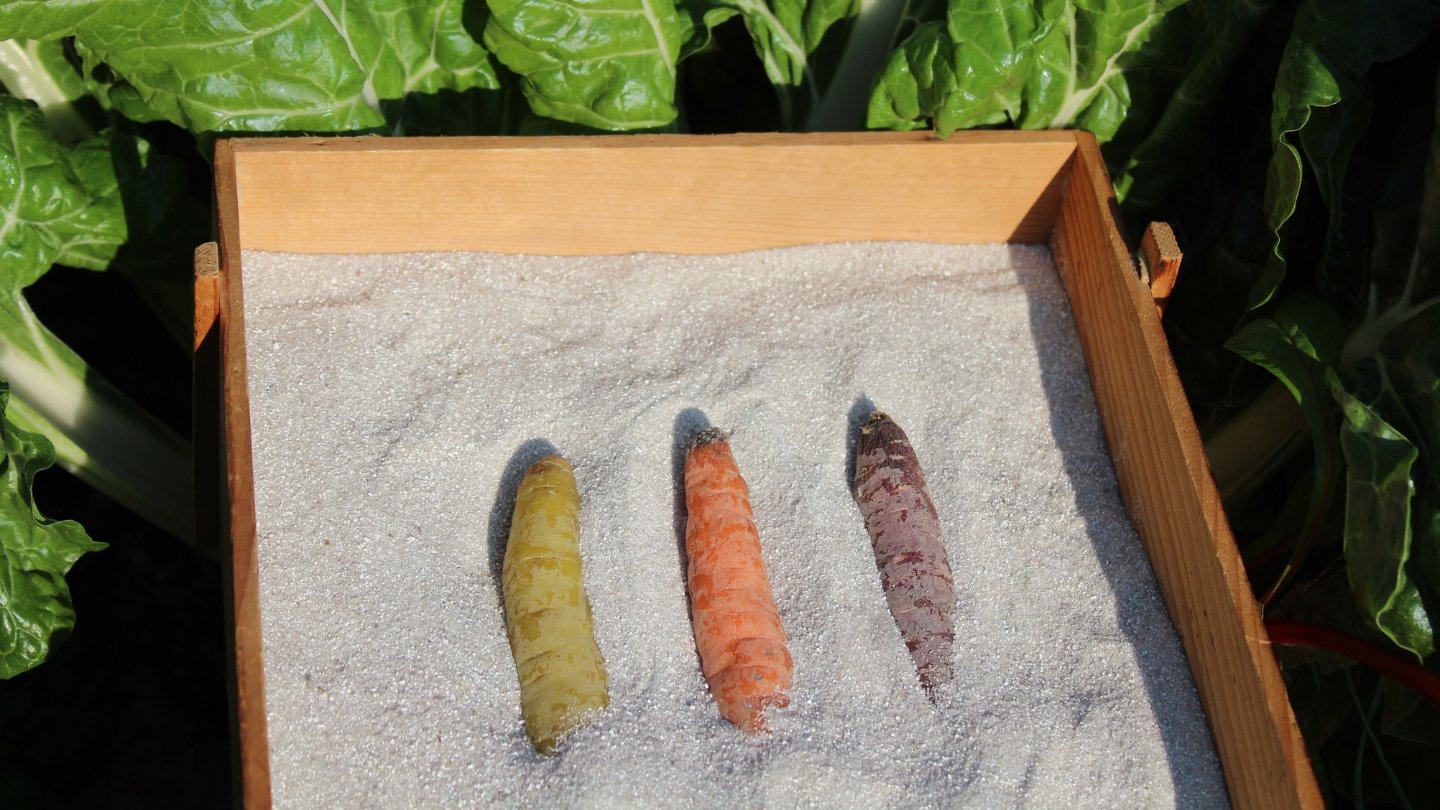
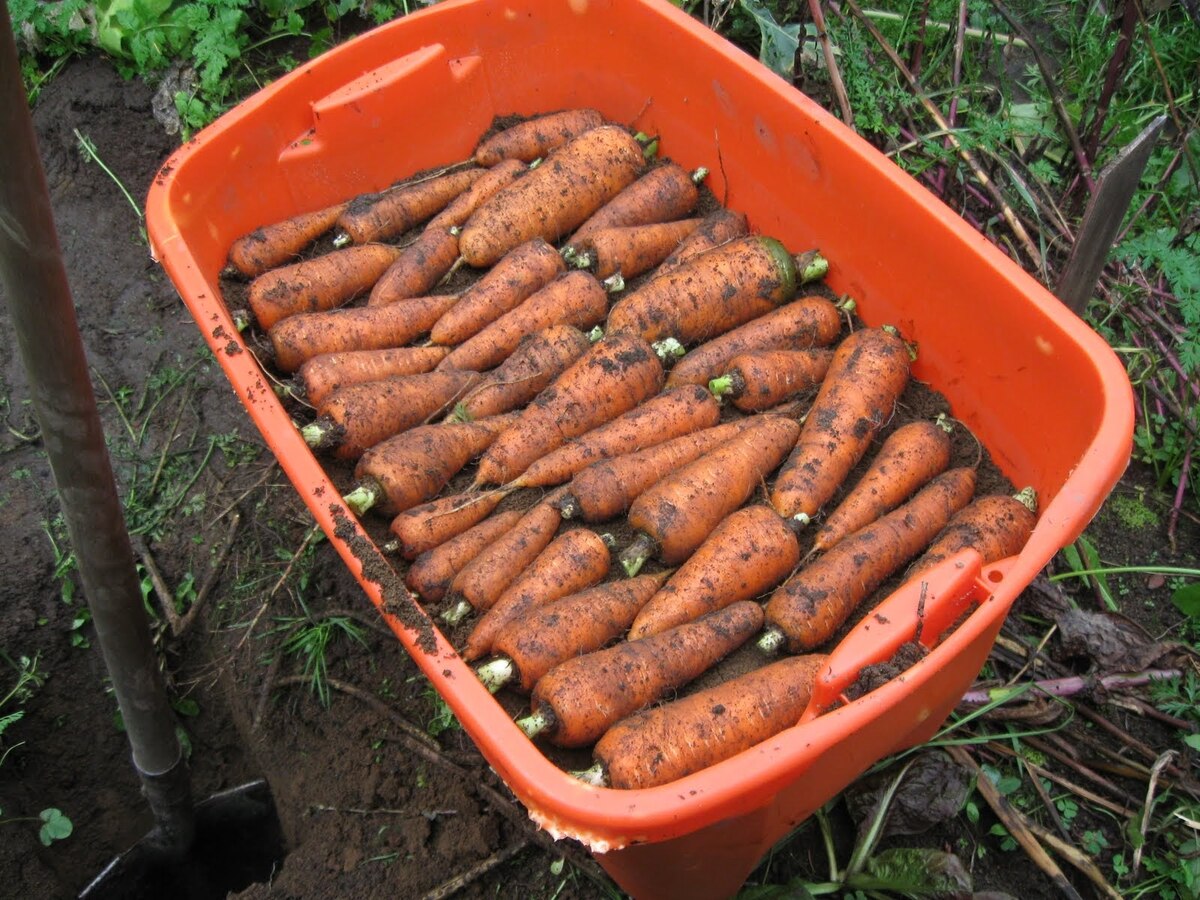
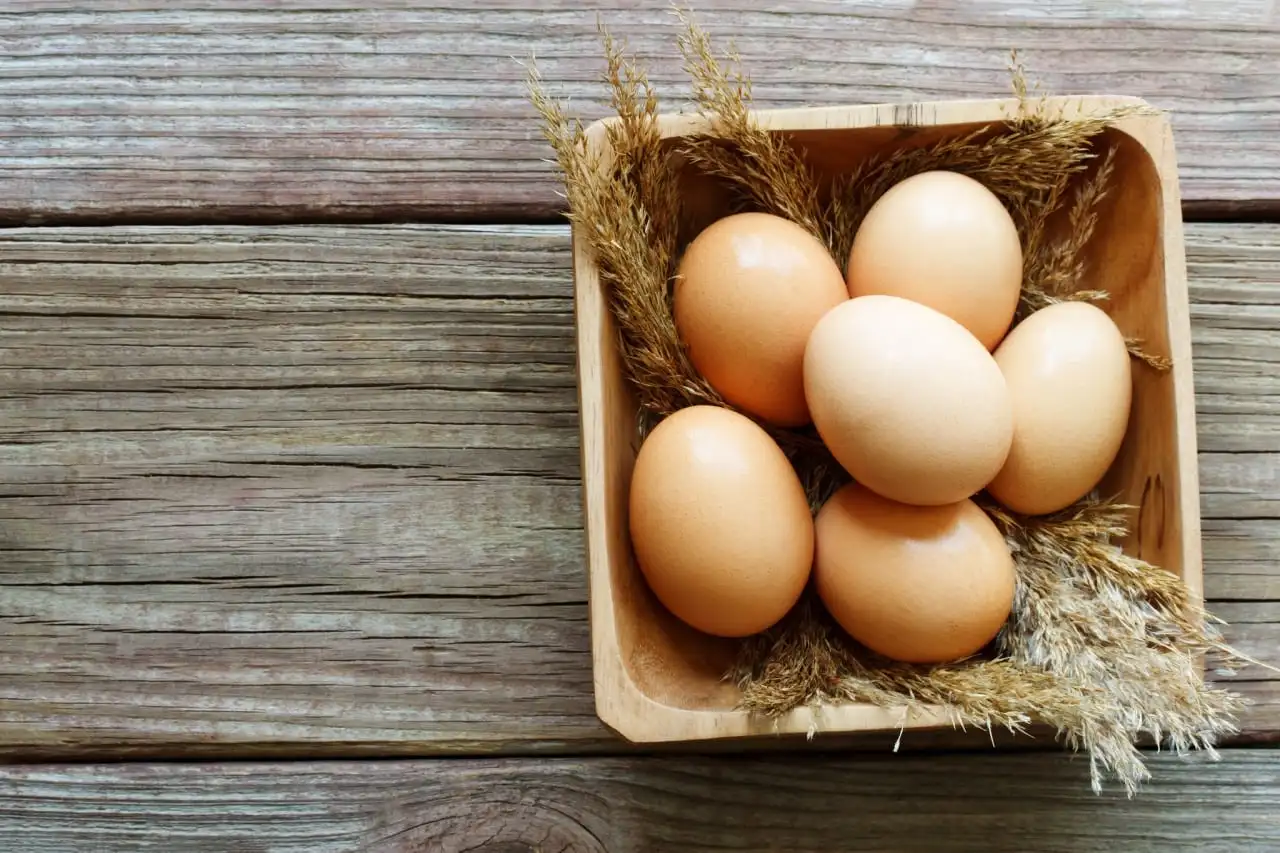
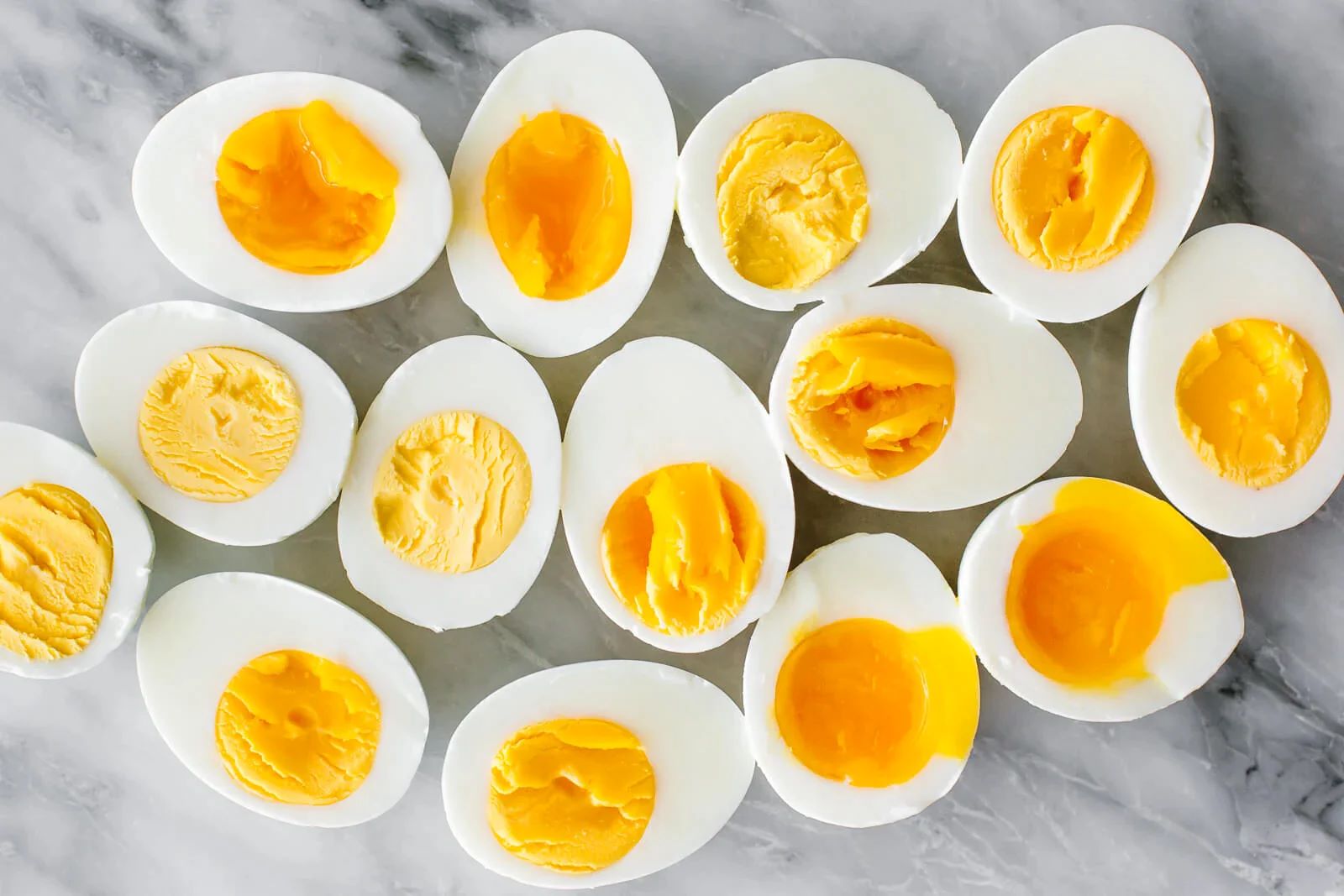
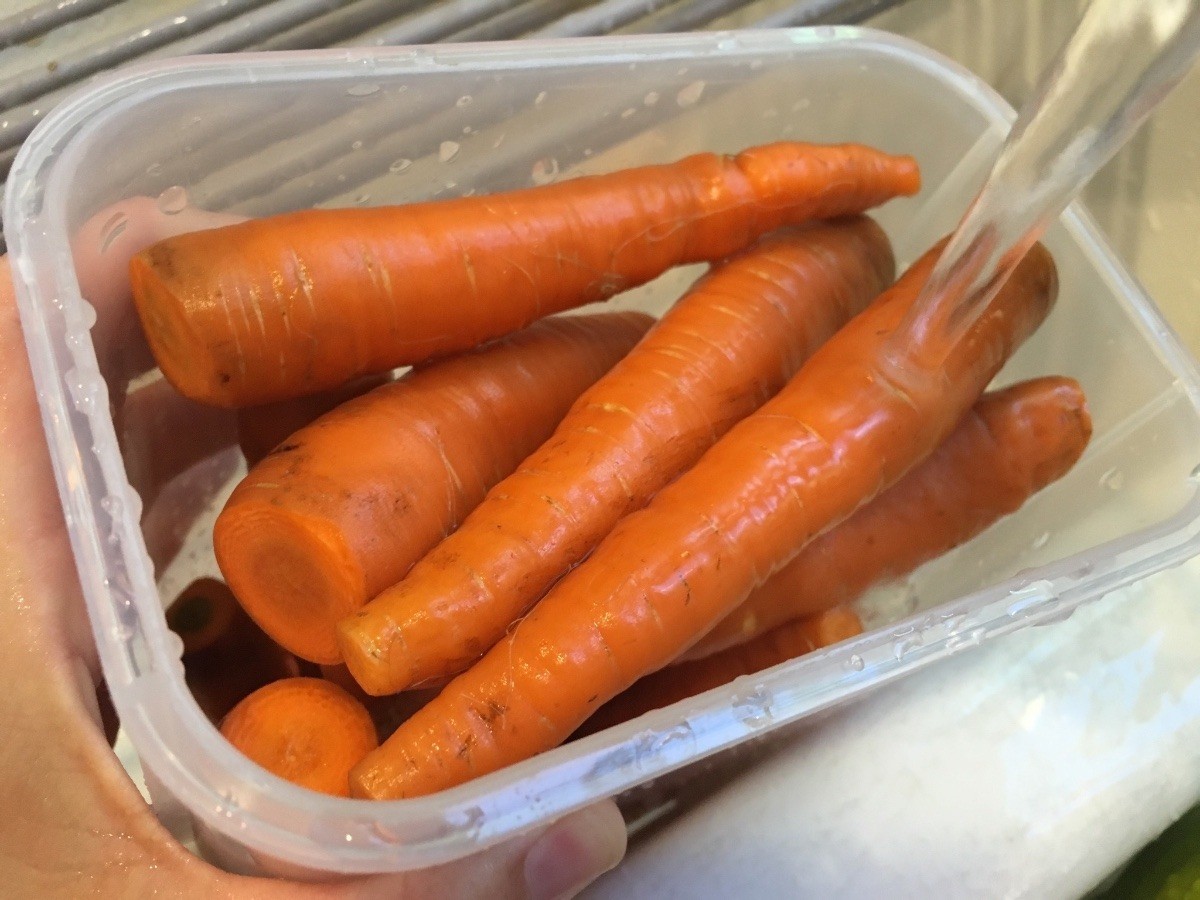
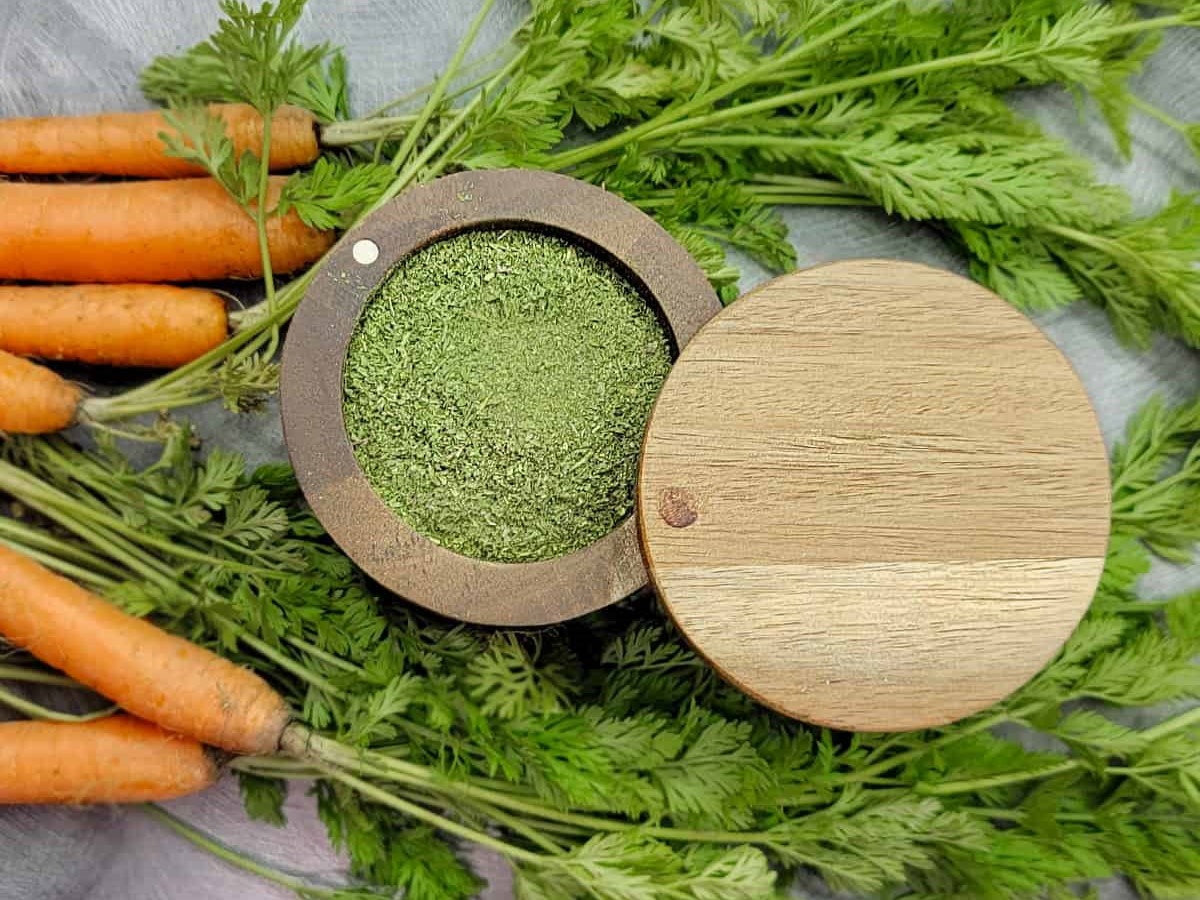
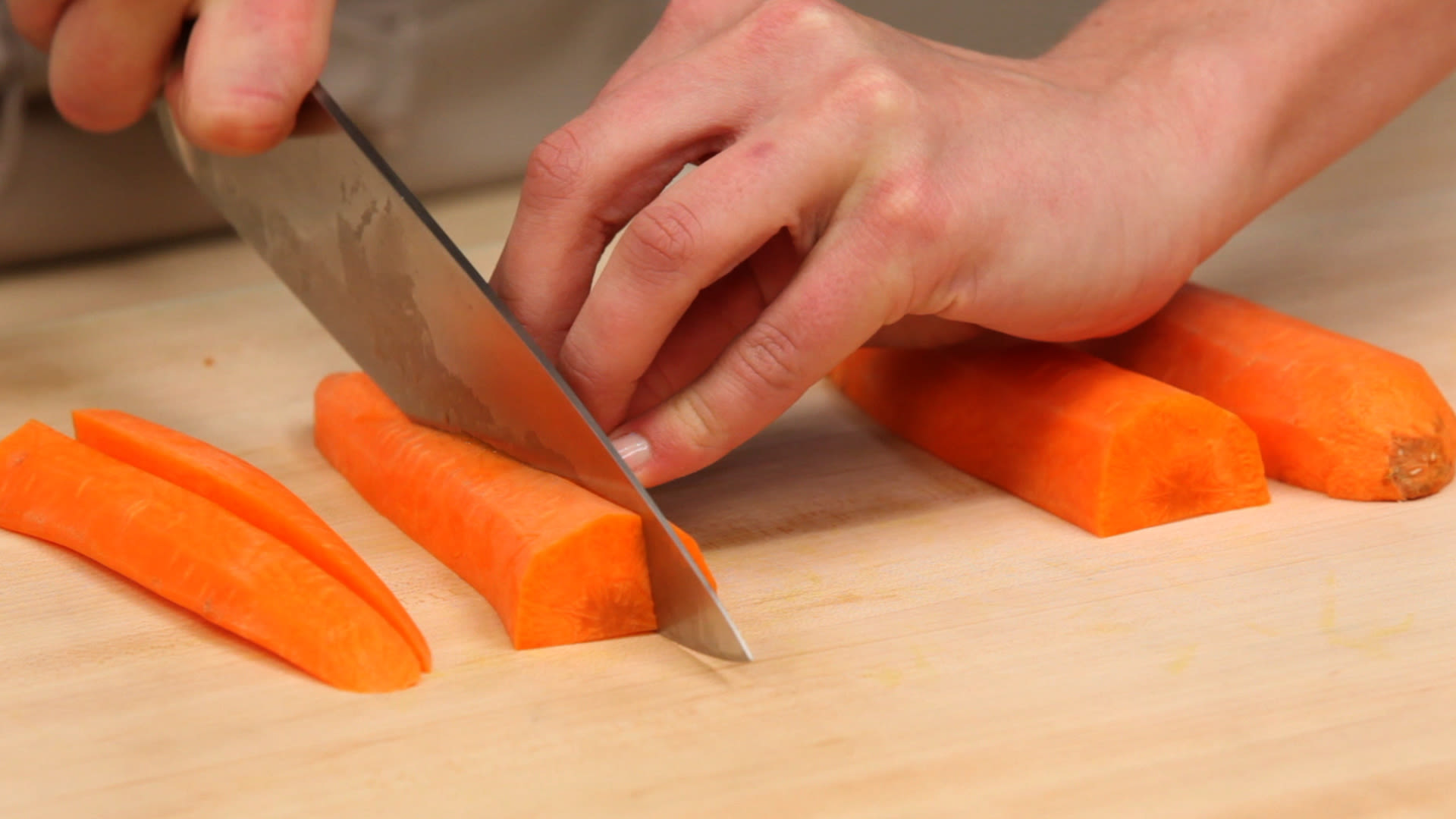
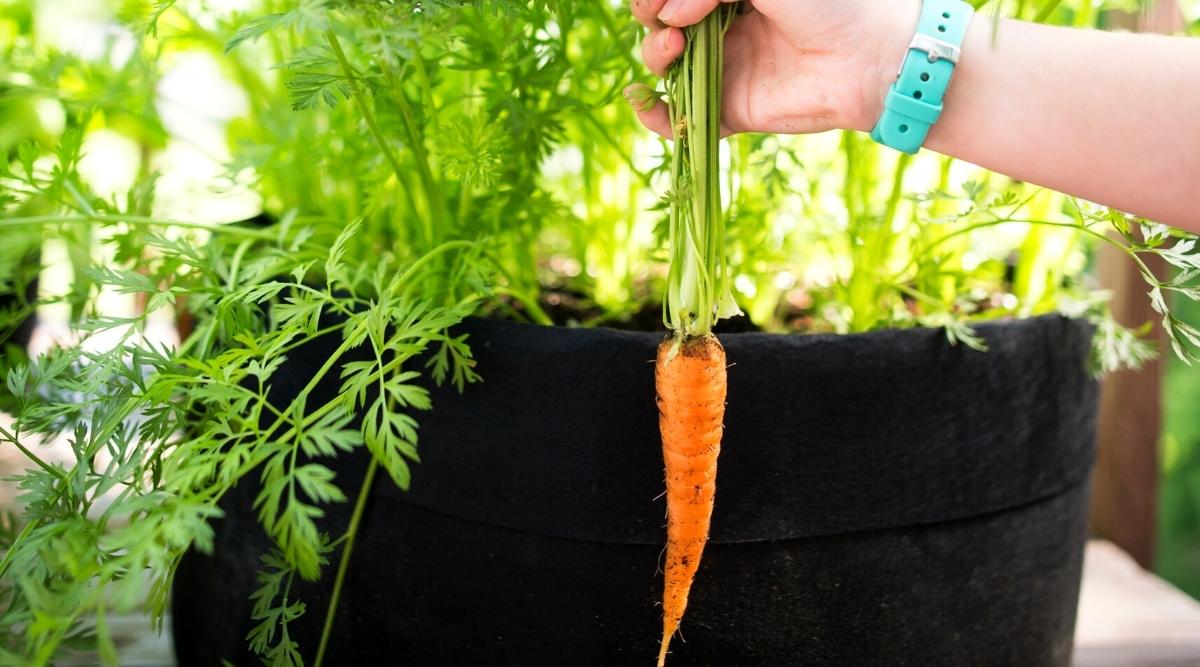
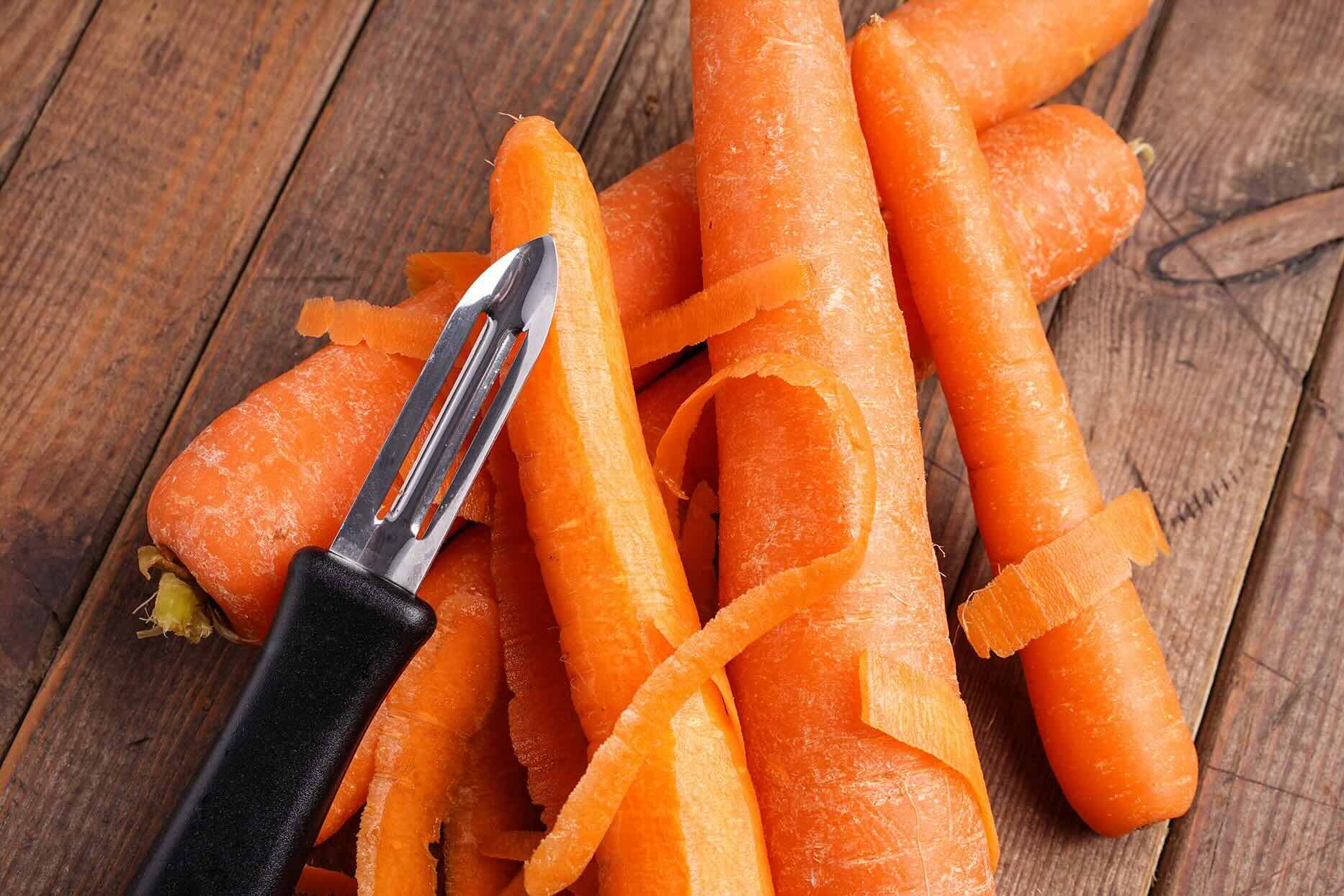
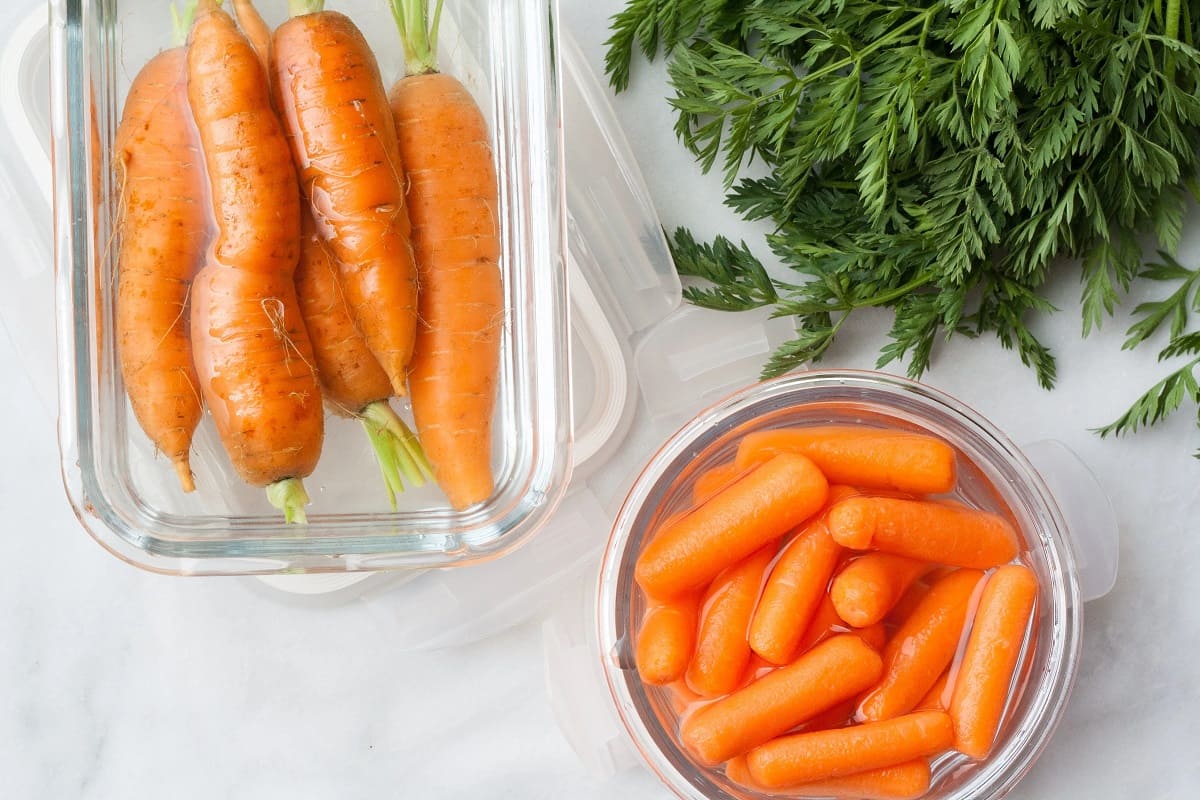

0 thoughts on “How To Store Carrots Without Refrigeration”